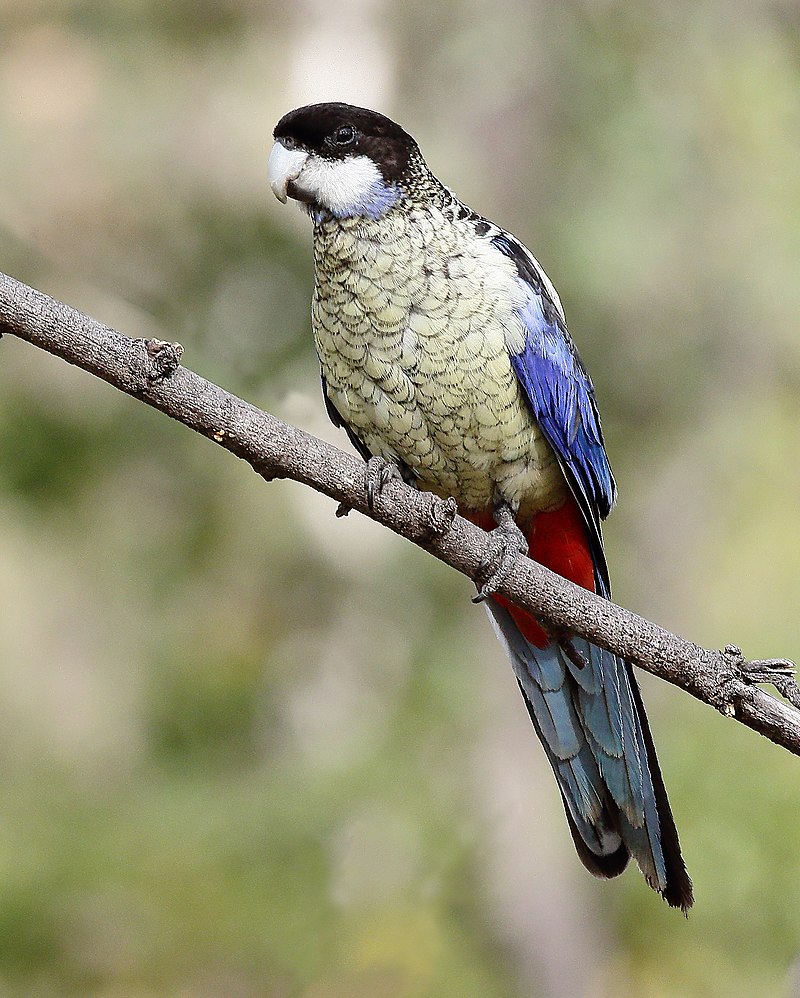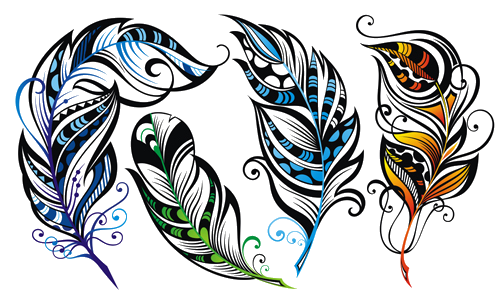Northern Rosella - Platycercus Venustus - Least Concern
The northern rosella (Platycercus venustus), formerly known as Brown's rosella or the smutty rosella, is a species of parrot native to northern Australia, ranging from the Gulf of Carpentaria and Arnhem Land to the Kimberley. It was described by Heinrich Kuhl in 1820, and two subspecies are recognised. The species is unusually coloured for a rosella, with a dark head and neck with pale cheeks—predominantly white in the nominate subspecies from the Northern Territory and blue in the Western Australian subspecies hillii. The northern rosella's mantle and scapulars are black with fine yellow scallops, while its back, rump and underparts are pale yellow with fine black scallops. The long tail is blue-green and the wings are black and blue-violet. The sexes have similar plumage, while females and younger birds are generally duller with occasional spots of red.
Found in woodland and open savannah country, the northern rosella is predominantly herbivorous, consuming seeds, particularly of grasses and eucalypts, as well as flowers and berries, but it may also eat insects. Nesting takes place in tree hollows. Although uncommon, the northern rosella is rated as least concern on the International Union for Conservation of Nature (IUCN)'s Red List of Endangered species.
Description: Smaller than all rosella species except the western rosella, the adult northern rosella weighs 90 to 110 g (3.2 to 3.9 oz) and is 29 to 32 cm (11 to 13 in) long. It has broad wings with a wingspan of around 44 cm (17 in), and a long tail with twelve feathers.[9] The sexes are almost indistinguishable, though some adult females have duller plumage and are more likely to have some red feathers on the head and breast. The adult bird has a black forehead, crown, lores, ear coverts, upper neck and nape, a whitish throat and large cheek-patches, which are mainly white with violet lower borders in the nominate subspecies, and more blue with a narrow white upper segment in subspecies hillii. The feathers of the lower neck, mantle and scapulars are black narrowly fringed with yellow, giving a scalloped appearance, while the feathers of the back, rump, upper tail coverts and underparts are pale yellow with black borders and concealed grey bases. Those of the breast have very dark grey bases, occasionally tinged with red. The undertail covert feathers are red with black fringes. The feathers on the upper leg are pale yellow tinged with blue. The central rectrices of the long tail are dark green changing to dark blue at the tips, while the other feathers are dark blue with two bands of pale blue and white tips. The undertail is pale blue with a white tip. The wings have a wide purplish blue shoulder patch at rest, with the secondary feathers edged darker blue and the primaries black edged with blue. The beak is off-white with a grey cere, the legs and feet are grey, and the iris is dark brown. Immature birds resemble adults but are duller overall, with less-well defined cheek patches. The black plumage in particular is more greyish and there are more likely to be scattered red feathers on the head, neck and underparts.

Psittaciformes, The Parrot Index, a part of Phoenix Feathers © 2016 - 2023
Page last updated: 12/24/23
Phoenix Feathers

